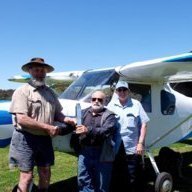The Airservices Australia NAIPS site contains the following:
...............................................
Flight Notification Form
Pilot Responsibilities
Pilots are not required, as they once were, to lodge details about tracks, headings, true air and ground speeds or time intervals. However, this does not absolve them from the responsibility of preparing a flight and fuel plan for their flight.
The methodology used by individual pilots to prepare their plans is a matter of choice, but good aviation practice and common sense dictates that a careful plan is the key to a good flight.
Information Required on the Form
The information now required by ATS to deliver air traffic control is limited to the following:
information about the aircraft
the radio and communications equipment on board
the departure and destination points of the flight
the planned route
the cruising speed of the aircraft
a SARTIME
the emergency equipment on board
the number of passengers on board
details of the pilot
The flight notification form is divided into a number of boxes or items. Each of these items requires information delivered in a specific way.
The AIP has a complete summary of all possible options for the flight notification form in AIP ENR 1.10 Appendix 2.
Airservices has released a range of instructional videos to help pilots plan
their flights in the NAIPS Internet Service (NIS). Available at:
Request Rejected
...................................
I recommend RAAus pilots who wish to fly in CTA/R or use flight following register for and use the NAIPS to get their weather and submit flight notifications (plans and sartimes).
I use the Champagne Flight Planner 3000 program for flight planning - it allows you to download weather and apply (automatically) winds and then check and submit your plan to NAIPS. Saves a lot of time and effort.
I do not use them (yet) but I understand OzRunways and AvPlan provide a similar facility.
Or you can submit the plan manually via NAIPS on the internet from your PC, tablet or mobile phone - check out the 'Briefing' and 'Flight Notification' tabs.
NAIPS also allows you to store your aircraft details and/or standard flight plans to make the process faster.
DWF



